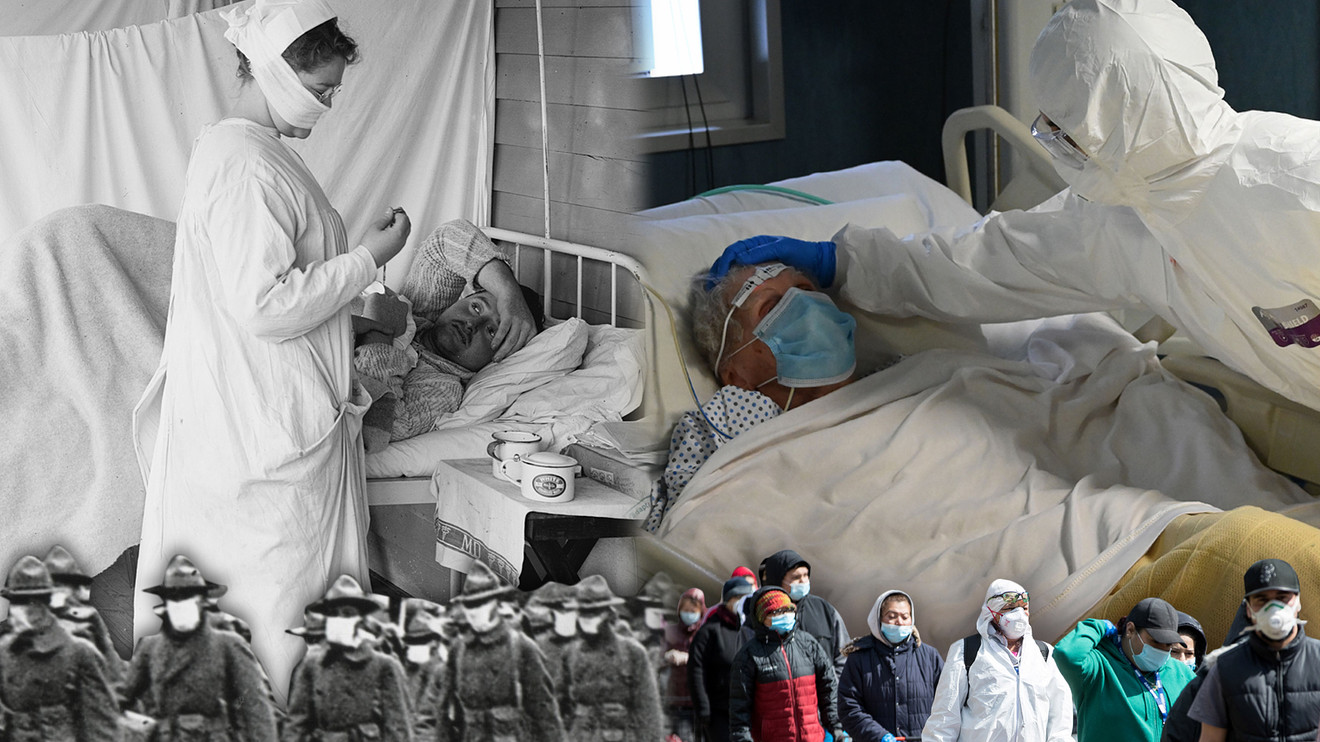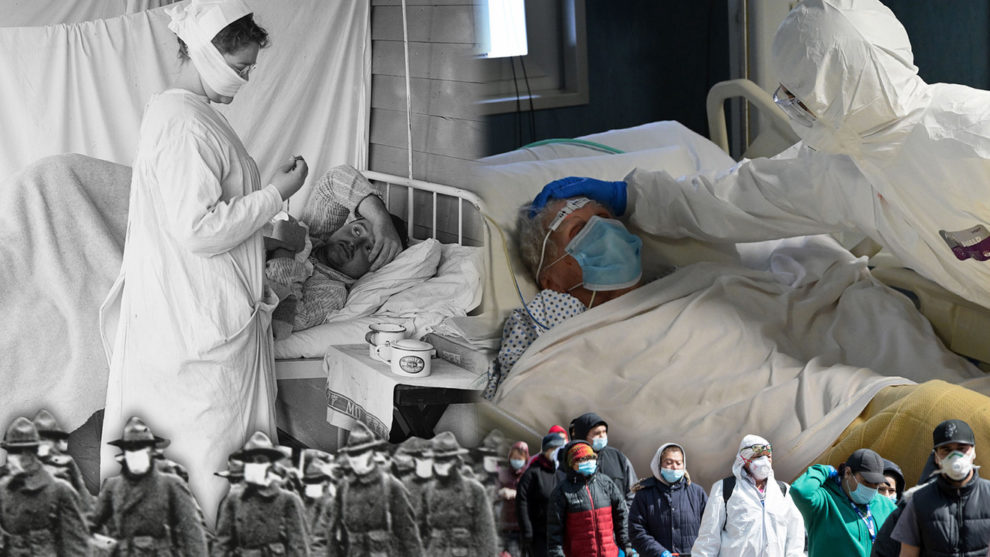
America is staring down a widespread COVID-19 testing shortage with no vaccine in sight. So what happens when coronavirus makes its unceremonious return?
Anthony Fauci, the director of the National Institute of Allergy and Infectious Diseases, said that the novel coronavirus “might keep coming back” year after year. “The ultimate game changer in this will be a vaccine,” he said. But that, Fauci estimated, could take 12 to 18 months.
“The four seasonal coronaviruses do not seem to induce long-term immunity,” Gregory Poland, who studies the immunogenetics of vaccine response in adults and children at the Mayo Clinic in Rochester, Minn., told MarketWatch. “We can speculate, but not dogmatically.”
“ Coronavirus immunity differs from other diseases. ”
“We will not have a vaccine by next winter,” Poland added. “The Southern Hemisphere is just starting their fall and winter. They will have a severe course of this disease due to less preparedness, less medical infrastructure and less public infrastructure.”
Coronavirus immunity differs from other diseases. Immunizations against smallpox, measles or Hepatitis B should last a lifetime, Poland said. Coronaviruses, first discovered in the 1960s, interact with our immune system in unique and different ways, he added.
How do other coronaviruses compare to SARS-CoV-2? People infected by SARS-CoV, an outbreak that centered in southern China and Hong Kong from 2002 to 2004, had immunity for roughly two years; studies suggest the antibodies disappear six years after the infection.
For MERS-CoV, a coronavirus that has caused hundreds of cases in the Middle East, people retain immunity for approximately 18 months — although the long-term response to being exposed to the virus again may depend on the severity of the original infection.
The world, Poland said, should brace itself for round two: “We will start moving into our summer when they’re moving into their winter,” he said. “If, as is likely, we don’t restrict all travel, cases will start coming back into the Northern Hemisphere and we’ll have another outbreak this fall.”
It’s too early for ‘herd immunity’ to be effective
Without a vaccine, “herd immunity” is another option. That theory, briefly considered in the U.K. as an alternative to closing businesses and practicing social distancing, was deemed too risky. Ultimately, enough people would need to be immune to shield the most vulnerable.
“There’s no chance that immunity is going to be high enough to reach herd immunity,” Poland said. “With influenza, you need herd immunity of 60% to 70%. With measles, you need about 95%. With COVID-19, it’s somewhere in the middle.”
In the absence of a vaccine, Poland said several conditions are necessary for herd immunity to work: a very high level of population immunity, for that immunity to be durable, and for the virus to not mutate. “None of those seem to be operational at present,” he said.
Just over 4.1 million people have been tested in the U.S. for SARS-CoV-2, there are 824,147 confirmed cases, and nearly 45,000 deaths. Testing has been delayed by shortages of reliable tests nationwide. A recent Reuters poll suggested 2.3% were diagnosed with COVID-19.
“ With influenza, you need herd immunity of 60% to 70%. With measles, you need about 95%. With COVID-19, it’s somewhere in the middle. ”
In addition to the level of herd immunity (or lack thereof) to protect those who are most vulnerable, people will have to be cognizant of the disease spreading through asymptomatic carriers — that is, people who are infected but show no signs that they’re ill.
For example, a New England Journal of Medicine study published this month found that 29 (or 14%) of 210 pregnant women arriving at New York–Presbyterian Allen Hospital and Columbia University Irving Medical Center tested positive for COVID-19, yet displayed no symptoms.
“Our use of universal SARS-CoV-2 testing in all pregnant patients presenting for delivery revealed that at this point in the pandemic in New York City, most of the patients who were positive for SARS-CoV-2 at delivery were asymptomatic,” the study concluded.
“It underscores the risk of Covid-19 among asymptomatic obstetrical patients,” added the study, which was published earlier this month. “Moreover, the true prevalence of infection may be underreported because of false negative results of tests to detect SARS-CoV-2.”
Lessons in immunity from the Spanish flu of 1918
So what will happen if or when SARS-CoV-2, which causes the respiratory disease COVID-19, returns? “We’re just 14 weeks into this, so no one knows,” Poland said. If it has a slight mutation, he added, the response of our antibodies will be “moderately irrelevant.”
We can’t expect to have the same “herd immunity” or “original antigenic sin” — the ability of our immune systems to remember a virus that is similar, but not the same, as a previous version — as influenza. Influenza, after all, has been around for 500, if not 1,000 years.
“During the great influenza pandemic of 1918, the age group that disproportionately died were young people, not older adults,” Poland said. “Older adults had seen previews of this virus in earlier years, probably in the late 1800s, so they had immunological memory.”
“ ‘COVID-19’s sweet spot could be October to May.’ ”
There are similarities between influenza and SARS-CoV-2, and they have almost identical symptoms — fever, coughing, night sweats, aching bones, tiredness, and nausea and diarrhea in the most severe cases. Like all viruses, neither are treatable with antibiotics.
They can both be spread through respiratory droplets from coughing and sneezing, but they come from two different virus families — and ongoing research to develop a universal vaccine for influenza shows how tricky both influenza viruses and coronaviruses can be.
“The 1918 Spanish flu’s second wave was even more devastating than the first wave,” Ravina Kullar, an infectious-disease expert with the Infectious Diseases Society of America and adjunct faculty member at the University of California, Los Angeles, told MarketWatch.
Historians believe that a more virulent influenza strain hit during a hard three months in 1918 and was spread by troops moving through Europe during the First World War. That would be a worst-case scenario for a second wave of SARS-CoV-2 this fall or winter.
“It will likely hit harder in areas not severely impacted the first time in the interior of the U.S., where there’s a lot more susceptible people,” Kullar said. “COVID-19’s sweet spot could be October to May, with it peaking, likely, in October and November.”
Kullar said scientists are learning something new every day from modeling studies. “If it follows the same pattern as influenza, it will likely level off during the summertime,” she said. “If immunity is in existence, then likely the virus will come back looking for new victims.”
Testing will determine the rate of asymptomatic carriers
What else, aside from social distancing to “flatten the curve” of new infections, can be done between now and then? While scientists work to crack the code of the novel coronavirus, the government and members of the public can work together.
There is reason to be optimistic. “We still have a lot to learn about the flu, even though we’ve had flu vaccines since the mid-1940s,” Poland said. “It’s amazing what the world has done in 14 weeks on COVID-19, but what’s more amazing is how much more there is to learn.”
In those 14 weeks, scientists around the world have learned a lot about SARS-CoV-2, including the virus’s genetic structure; how it infects human cells; what kind of disease manifestation it causes; and how it impacts the liver, kidney and brain.
“ ‘It all comes down to testing.’ ”
“It all comes down to testing,” Kullar said. “We really need to have wide-scale testing available, and contact tracing to find everyone who has been exposed and get them to self-isolate for 14 days. We don’t have a system like that in the U.S. at present.”
On Monday, more than 50 days after the first coronavirus case was reported in New York, the state began random antibody testing on consenting grocery-store patrons in different regions across the state. There is no guarantee as yet that the presence of antibodies confers immunity.
The procedure, also known as serology testing, uses a finger-stick blood sample. It will analyze 3,000 people across New York, which has a population of 19.5 million, over the next week, Gov. Andrew Cuomo said on Sunday. But questions remain about the tests’ effectiveness.
Assuming testing is up to speed by the end of summer, Kullar says Americans should be on a sound footing for round two of SARS-CoV-2 with, ideally, enough hospital supplies and testing in place to ensure we all make fewer mistakes next time around.
But a lot will come down to the American people. “How we behave will really determine how big this virus is going to get,” she said. “Maintain social distancing and wear masks in public until we see infection rates go down, and keep doing it until we get enough testing.”











Add Comment